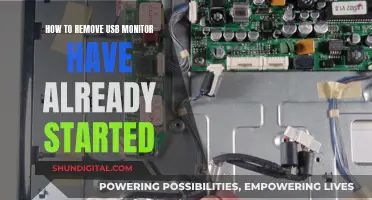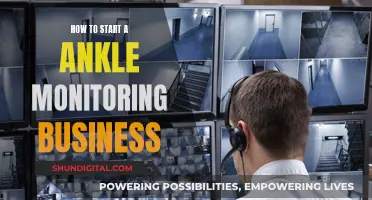
Monitoring your subordinates' performance is an essential aspect of management that can help organisations achieve their goals, motivate staff, and improve processes. However, it is a delicate task that requires balancing supervision with privacy and trust. Here are some strategies to effectively monitor your subordinates' performance:
- Regular Check-Ins: Schedule regular check-ins with your team and individual team members. This allows you to track progress, address any issues, and provide support.
- Visual Monitoring: Observe your subordinates' work activities, especially if they are engaged in physical or creative tasks. However, be mindful of the potential negative impact on the work environment, as employees may feel uncomfortable being watched.
- Time Tracking Software: Utilise time-tracking software to gain insights into your subordinates' time management and productivity. This can help identify inefficiencies and improve overall performance.
- Performance Tools: Use performance appraisal systems, feedback tools, analytics dashboards, and other platforms to automate and streamline the performance management process.
- Self-Monitoring: Encourage subordinates to use self-monitoring tools such as checklists, activity logs, and schedules to enhance their initiative, engagement, and personal drive to succeed.
- Performance Feedback: Provide clear, specific, and balanced feedback to your subordinates to help them improve their performance. Encourage two-way, interactive, and collaborative feedback sessions.
- Performance Trends: Monitor patterns, comparisons, and projections in your subordinates' performance to identify strengths and weaknesses and make informed decisions about their development.
- Performance Criteria and Indicators: Clearly define expectations and success metrics, such as objectives, competencies, and behaviours. Ensure these criteria are communicated to your subordinates and that they are involved in setting their own development plans.
| Characteristics | Values |
|---|---|
| Frequency of monitoring | Should be proposed by the employee, but new tasks and poor performance require more frequent monitoring |
| Nature of monitoring | Should be proposed by the employee, but monitoring can include reviewing work, observing employee work activities, reading reports, self-reporting, surveying other units, noting and investigating complaints and commendations |
| Purpose of monitoring | To reinforce good performance and improve poor performance |
| Performance standards | Should be established and communicated to the employee |
What You'll Learn

Utilise monitoring software
Monitoring software is a highly effective way to track employee performance and gain valuable insights into their work. This software can help identify areas for improvement and address productivity concerns. It is especially useful for remote work setups, where managers cannot physically observe their employees.
There are several types of monitoring software available, each with unique features to suit different company needs. Some software focuses on time tracking, providing real-time data on the time spent on projects, idle time, and time spent in documents. This can help managers understand their team's productivity and work distribution.
Other software may offer a more comprehensive suite of features, including employee monitoring, engagement tools, time tracking, and productivity reports. For example, ClickUp offers a wide range of templates, including one-on-one meeting templates, engagement surveys, and action plans. Similarly, ActivTrak provides data on employee daily work activity, long-term productivity trends, and signs of burnout or disengagement.
When choosing monitoring software, it is essential to consider the privacy of your employees. While these tools can provide valuable insights, it is crucial to respect your employees' personal privacy and ensure that data collection is done ethically and in compliance with relevant regulations, such as GDPR.
Additionally, it is worth noting that some employees may express concerns about monitoring, especially when working from home. To build trust, employers should communicate the purpose and benefits of these tools, demonstrating how they can positively impact the organisation and employee objectives.
Overall, monitoring software is a powerful tool for performance tracking and improving productivity. When used effectively and respectfully, it can help managers identify areas of improvement, provide targeted feedback, and enhance the overall performance of their team.
Studio Monitor Blown: How to Spot the Signs
You may want to see also

Schedule regular check-ins
Regular check-ins are an essential part of monitoring subordinates' performance. Here are some tips to help you schedule and conduct effective check-ins:
Firstly, decide on the frequency of the check-ins. This may depend on factors such as the nature of the work, the experience level of the subordinate, and whether there are any performance issues. For example, new or inexperienced team members may require more frequent check-ins, while experienced employees can have check-ins spaced further apart.
Involve Subordinates in the Process
If possible, involve your subordinates in deciding the nature and frequency of the check-ins. This gives them a sense of ownership and can improve the supervisor-subordinate relationship. For example, they may suggest that you observe them performing a task or providing a service. When you show up to observe, they will understand and accept your presence.
Communicate the Purpose and Frequency
Make sure to communicate the purpose and intended frequency of the check-ins to your subordinates. Emphasize that the focus is on improving performance and providing support, rather than trying to catch them out. This open communication can help prevent any feelings of harassment or micromanagement.
Combine with Other Monitoring Techniques
Regular check-ins are just one part of performance monitoring. Combine them with other techniques, such as reviewing work samples, observing work activities, reading reports and logs, and seeking feedback from clients or other units. This will give you a more comprehensive understanding of your subordinates' performance.
Focus on Key Responsibilities
During the check-ins, focus on the key responsibilities and performance standards that have been established for the role. Make sure to record your observations and notes so that you can refer back to them during performance evaluations.
Adapt Your Approach as Needed
If you notice performance issues, increase the frequency of check-ins and provide counselling and remedial training. If these measures are ineffective and performance remains unsatisfactory, initiate progressive discipline rather than continuing with frequent monitoring, which could be construed as harassment.
Be Mindful of Mental Health
Checking in with your subordinates is also an opportunity to assess their mental health and well-being. Are they feeling overwhelmed, stressed, or unmotivated? As a supervisor, you can provide support and help them manage their workload to prevent burnout.
Enhancing Mic Monitoring: Remove Delay for Better Audio Experience
You may want to see also

Encourage self-monitoring
Encouraging self-monitoring among your subordinates can be a great way to increase motivation and allow them to excel. It also helps them pick up new skills such as time management, problem-solving, and accountability.
Self-Monitoring Tools
Provide your employees with self-monitoring tools such as project plans, checklists, and activity logs. These tools enable employees to track their progress, meet goals and deadlines, and monitor their performance. Regularly reviewing these self-monitoring tools will help you stay informed about your subordinates' work without micromanaging them.
Graphs and Charts
Introduce the use of graphs and charts for self-monitoring. These visual tools can be divided into frequency and duration for certain activities and may include written instructions, pictures, and videos. Ensure that any graphs and charts are consistent, timely, and honest. Send them to your employees via email at regular intervals and consider implementing a reward system for those who actively engage in self-monitoring.
Feedback Culture
Seek feedback from your employees and provide them with feedback in return. This two-way communication helps identify problems and solutions. It also shows your employees that you value their input and are committed to their growth.
Training and Support
Provide training and support to your employees to help them develop self-management skills. This can include teaching them about goal-setting, time management, and emotional intelligence. Additionally, consider pairing new employees with experienced self-monitoring workers, creating a cohesive team environment and fostering the sharing of effective working patterns.
Remember, while self-monitoring can be beneficial, it's important to maintain a balance and avoid micromanaging. Respect your employees' privacy and ensure that any monitoring practices are transparent and aligned with relevant data protection regulations.
Best Monitor Size for Pro Tools Users
You may want to see also

Observe employee work
Observing your employees at work is a critical aspect of performance monitoring. It allows you to assess your team's work habits, skills, and behaviours directly, providing valuable insights for feedback, improvement, and recognition. Here are some detailed guidelines on how to effectively observe employee work:
Planning the Observation:
Before conducting an observation, it is crucial to establish a clear purpose. Are you observing a specific skill or behaviour, or seeking a general overview? Choose an appropriate time and place when your employee typically performs the tasks you want to observe, and ensure the environment is conducive to a productive observation. Communicate the observation to your employee to reduce anxiety and help them feel more at ease. Prepare the necessary tools, such as checklists or notebooks, to record your observations comprehensively.
Conducting the Observation:
During the observation, focus on the employee's actions, words, and behaviours. Be objective and avoid personal judgments or assumptions. Observe what you see and hear without interpreting their behaviour. Take detailed notes, recording specific examples of their actions and behaviours. Look for recurring themes or patterns that indicate strengths or areas for improvement. Evaluate their performance within the context of their role and the situation.
Providing Feedback:
After the observation, schedule a feedback meeting with your employee. Start by acknowledging their strengths and positive performance areas. Address areas that need improvement, providing specific examples of behaviours that could be enhanced. Collaborate with your employee to develop an improvement plan or offer resources for further training. Encourage open communication and create a safe space for questions and perspective sharing.
Follow-up and Monitoring:
Work observations should be an ongoing process. Follow up with your employees periodically to monitor their progress and provide continuous support. Regular observations help employees track their development and ensure they are on the path to achieving their performance goals. Remember, the goal of work observations is to help employees grow and improve, ultimately contributing to their success and the organisation's success.
Remote Observation:
With the rise in remote work, it is worth noting that observing employees in a virtual setting may require different tools and techniques. Video calls, screen sharing, and remote-access programs can facilitate remote observations and real-time corrections. Utilise technology to effectively mimic over-the-shoulder observations, ensuring you can still monitor your employees' performance, even when they are not physically present.
Monitored and Modeled Data: Finding RHC Ratios
You may want to see also

Provide feedback
Providing feedback is an essential aspect of monitoring subordinates' performance. Here are some detailed guidelines on how to provide constructive and effective feedback:
Formal and Informal Feedback Sessions:
Performance feedback can take the form of formal meetings or informal conversations. Formal sessions can be scheduled to review an employee's performance over a specific period, allowing for a structured evaluation. Informal feedback, on the other hand, can be more spontaneous and used to acknowledge or address performance promptly. A blend of both approaches ensures that performance is regularly assessed and employees feel valued.
Clear, Specific, and Balanced Feedback:
When giving feedback, ensure it is clear, specific, and balanced. Avoid vague statements that may confuse or demotivate the employee. Be transparent about the criteria and indicators used to assess their performance. Provide concrete examples and focus on both strengths and areas for improvement. This balanced approach ensures that employees understand what they are doing well and where they need to focus their efforts.
Two-Way Interactive Feedback:
Encourage a collaborative feedback process by inviting the employee's input. Create a safe space for them to express their thoughts, concerns, and suggestions. This not only makes them feel valued but also helps identify any underlying issues that may impact their performance. It fosters a sense of ownership and engagement in their professional development journey.
Focus on Performance Criteria and Indicators:
When providing feedback, align your comments with the predefined performance criteria and indicators. This ensures that the feedback is relevant, measurable, and fair. Discuss the employee's progress against specific goals, competencies, behaviours, and key performance indicators (KPIs). This structured approach helps employees understand how their contributions align with the organisation's objectives.
Regular Feedback for Continuous Improvement:
Feedback should be an ongoing process rather than a one-time event. Regular feedback allows for course correction and continuous improvement. It helps employees stay motivated, set realistic goals, and bridge skill gaps. Supervisors should also be open to receiving feedback about their own performance, creating a culture of mutual respect and growth.
Feedback as a Motivational Tool:
Use feedback as an opportunity to reinforce good performance and show employees that their efforts are recognised and appreciated. This can be done through formal recognition, rewards, or simply sincere expressions of gratitude. Feedback can also be a powerful motivator when coupled with goal-setting. Help employees set achievable goals based on their feedback, and provide the necessary support to achieve those goals.
Remember, providing feedback is a skill that can always be improved. As a supervisor, focus on creating a safe, supportive, and growth-oriented environment for your subordinates.
Choosing the Right Monitor: Size Considerations
You may want to see also
Frequently asked questions
Monitoring employee performance is a delicate balance. While it's important to give your subordinates privacy, you also need to check in with them to ensure they're on track and meeting expectations. There are a number of ways to do this without being too intrusive, such as scheduling regular project check-ins with your team, using time-tracking software, and conducting individual employee check-ins.
Here are some specific techniques you can use:
- Review their work, either the total output or samples.
- Observe their work activities, especially if they work in a customer-facing role.
- Use time-tracking software to track active vs idle time and identify any inefficiencies in time management.
- Check in with them regularly to discuss their progress and provide support.
- Implement self-monitoring tools such as checklists, activity logs, and schedules.
- Analyse their performance and provide rewards and recognition when they improve.
There are several types of technology that can help you monitor your subordinates' performance:
- Time-tracking software: This can help you see how much time your subordinates are spending on different tasks and identify any inefficiencies in time management.
- Task management software: This can help you keep track of projects and milestones, and see the progress of tasks in real time.
- Employee monitoring software: This can track things like website activity, mouse movements, and application usage. However, be sure to comply with relevant data protection laws and be transparent with your employees about what is being monitored.







